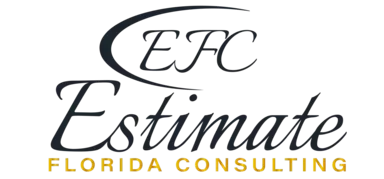The 4 Most Common Mistakes to Avoid in Construction Estimating
Estimating costs in construction can be a tricky endeavor. Even the most experienced contractors and project managers can make mistakes that affect their bottom line. Whether you’re tackling a residential remodel or a large commercial build, an accurate estimate right is non-negotiable for keeping the project on schedule and within budget. Here are the top 4 pitfalls that can throw off your construction estimate and how to avoid them.
1. Underestimating Material Costs
You may assume you’ve got the material costs nailed down. But even when you’ve got your measurements down to a science and know exactly what you need, materials can be a sneaky source of added expense. Prices change over time due to market conditions and availability, and things like choosing a higher-quality version of a product can make your project go way over budget.
How to Avoid It:

Build in some flexibility to your estimate. Don’t just account for the cheapest options—be sure to factor in quality, delivery fees, and potential price increases. Also, be realistic about how much of each material you’ll need. Buying in bulk and even slightly overordering upfront may save invaluable time and money later. Factor in all the little things, like disposal fees for excess materials or the cost of special orders.
2. Overlooking Labor Costs
Generally, labor is the most significant expense in construction estimates. As you tally up the various professionals needed for the project and how many hours it will take, you may overlook all the factors that impact the final cost. If delays arise, overtime work is needed, or the intended crew isn’t available, these costs can quickly accumulate, throwing off your whole budget.
How to Avoid It:
Realistically plan for labor costs from the start. Account for local wage changes based on season, region, and demand. Since labor includes all time on-site, factor in potential overtime or downtime. For longer projects, include a safety net in your labor budget. Maintain open communication with the crew to stay ahead of changes and adjust the budget as needed.
3. Ignoring the Risk of Unexpected Issues
One thing is inevitable in construction projects: something will go wrong. Even when you are meticulous in the planning phase, there are issues you simply cannot be aware of until the project is underway. This might be sudden weather delays, hidden structural damage, or the need for rework after equipment malfunctions. These come out of nowhere and eat away at your budget.
How to Avoid It:
Include a contingency budget in your estimate, ideally about 10-15% of the project’s cost. This buffer allows you to cover unplanned expenses without going over budget. To plan for potential risks, consult contractors, suppliers, or specialists about what could be hidden behind the walls or underground. It’s also helpful to regularly check in with the team throughout the project to identify and address early warning signs.
4. Neglecting to Plan for Waste Management
Another major oversight is forgetting to account for waste disposal. Construction projects generate a lot of debris, and failing to include waste removal costs can ruin your initial estimate. Whether it’s wood, drywall, or excess concrete, the cost of hauling away construction waste can add up quickly.
How to Avoid It:

Be sure to plan for waste management by including the cost of renting a dumpster from a local dumpster rental firm in your estimate. This is often the most cost-effective and efficient way to handle debris removal. By considering it early on, you’ll avoid surprise costs for last-minute junk removal services or extra trips to the dump.
Conclusion
When it comes to construction estimating, getting it right from the start can prevent problems down the road. The goal is to plan ahead, stay flexible, and consider all the factors that could affect your budget. By avoiding common mistakes like underestimating material costs, overlooking labor, or ignoring potential surprises, you can ensure that projects stay on track and your estimates are as accurate as possible.

